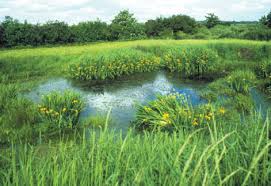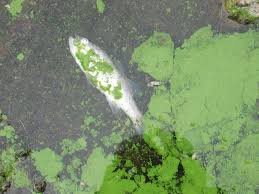WHAT IS EUTROPHICATION-MECHANISM, CONSEQUENCES & CONTROL
INTRODUCTION
Eutrophication is derived from Greek word “eutrophos” meaning “well-nourished.” It refers to enrichment of water by minerals and nutrient that causes excessive growth of algae and aquatic plants, depletion of fish species, general deterioration of water quality and some other effects. Thus, eutrophication causes impairment of many freshwater and coastal marine ecosystems in the world.
REASON OF EUTROPHICATION
- Increased level of nutrients
- Discharge of mainly nitrate or phosphate containing detergents, fertilizers, or sewage into an aquatic system
- Runoff from Agriculture practices
MECHANISM OF EUTROPHICATION
Eutrophication most commonly arises from the oversupply of nutrients, particularly phosphorus, which leads to overgrowth of plants and algae in aquatic ecosystems. After the death of such organisms, bacterial degradation of their biomass results in oxygen consumption, which creates low oxygen condition (hypoxia). It results in severe reduction in water quality.
Many scientists also consider nitrogen is the primary limiting nutrient for the accumulation of algal biomass. The sources of these excess phosphates are phosphates in detergent, industrial/domestic run-offs, and fertilizers from agricultural field.
Cultural Eutrophication– It refers to human activities such as clearing of lands, overuse of nutrients in agriculture, untreated sewage, runoff from all these activities accumulated in aquatic ecosystem. It leads to speedup natural eutrophication.

CONSEQUENCES
Eutrophication has severely ecological effects, such as, increased biomass of toxic phytoplankton (e.g. algae), decrease water quality, depletion of oxygen which kills fishes. Overall eutrophication, decreases biodiversity, changes species composition and dominance, and have toxic effects on fishes.
- Cultural eutrophication induces creation of dense blooms of noxious, foul-smelling phytoplankton that reduce water clarity and harm water quality.
- Algal blooms limit light penetration, reducing growth and causing die-offs of plants and also lowering the success of predators that need light to pursue and catch prey.
- High rates of photosynthesis associated with eutrophication can deplete dissolved inorganic carbon and raise pH to extreme levels during the day. Elevated pH can in turn ‘blind‘ organisms that rely on perception of dissolved chemical cues for their survival by impairing their chemo sensory abilities.
- Microbial decomposition severely depletes dissolved oxygen, creating a hypoxic or anoxic ‘dead zone’ lacking sufficient oxygen to support most organisms.

CONTROL
Due to widespread water quality degradation in aquatic ecosystem, eutrophication poses a serious threat to potable drinking water sources, fisheries, and recreational water bodies. Predicted climate change and human population growth has the potential to further degrade water quality and quantity. It is therefore, very important to minimize the intensity and frequency of algal and cyanobacteria blooms.
- Water quality can be improved by reducing nitrogen and/or phosphorus inputs into aquatic systems,
- Control of land runoff from agriculture field, industry and from other places,
- Bio-manipulation, i.e. the alteration of a food web to restore ecosystem health,
- Sea weed farming, such as kelp absorb phosphorus and nitrogen, thus it helps to reduce the nutrients level,
- Suitable law to control water pollution from sewage and
- Restore shellfish population.
Read more…
ESSAY ON ENVIRONMENTAL POLLUTION
WHAT IS ECOLOGY- OVERVIEW & TYPES
WHAT BIODIVERSITY IS-MEANING,TYPES&THREATS
TYPES OF THE ECOSYSTEM
ENERGY FLOW OF ECOSYSTEM
HYDROLOGIC CYCLE-OVERVIEW & PROCESSES